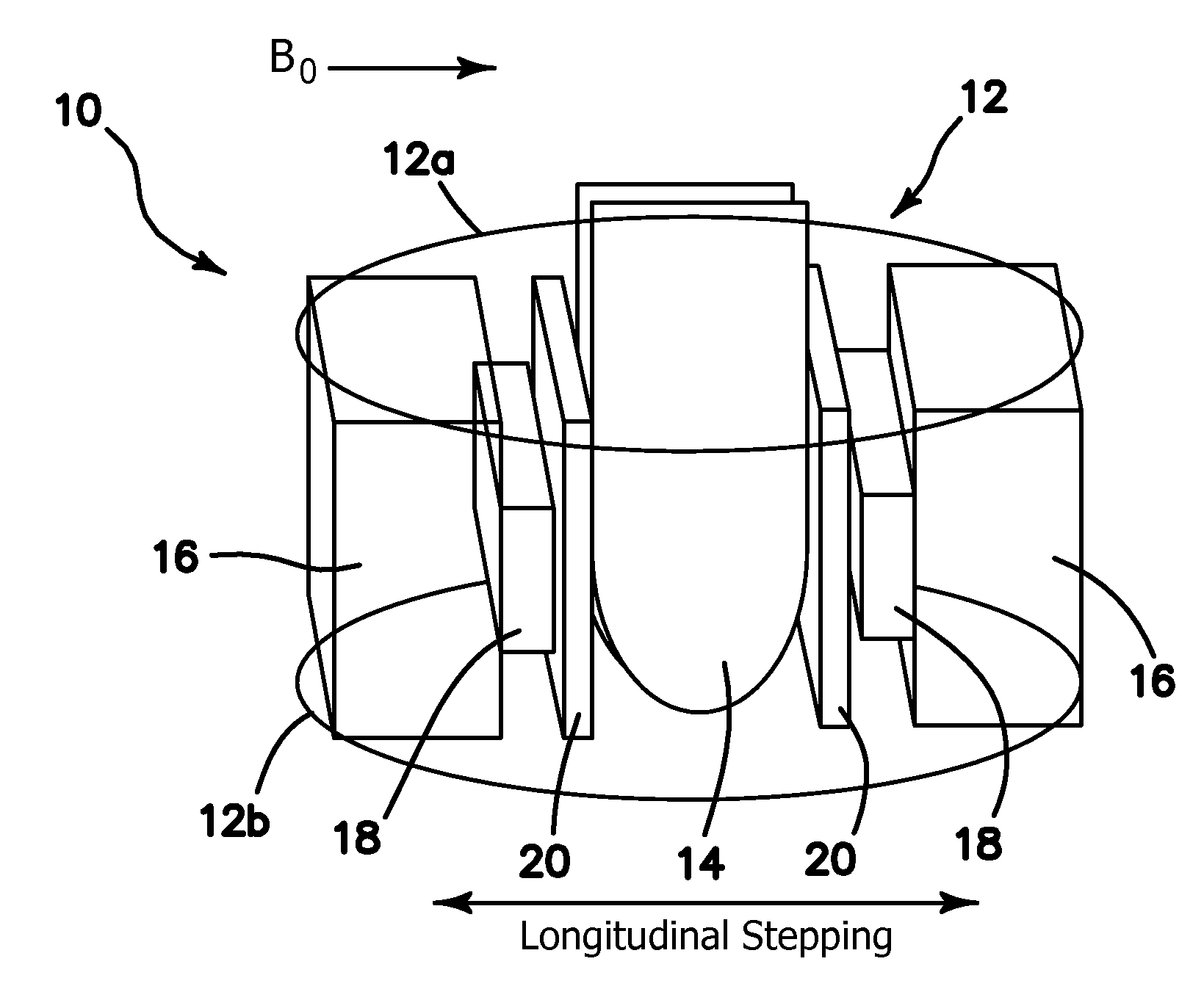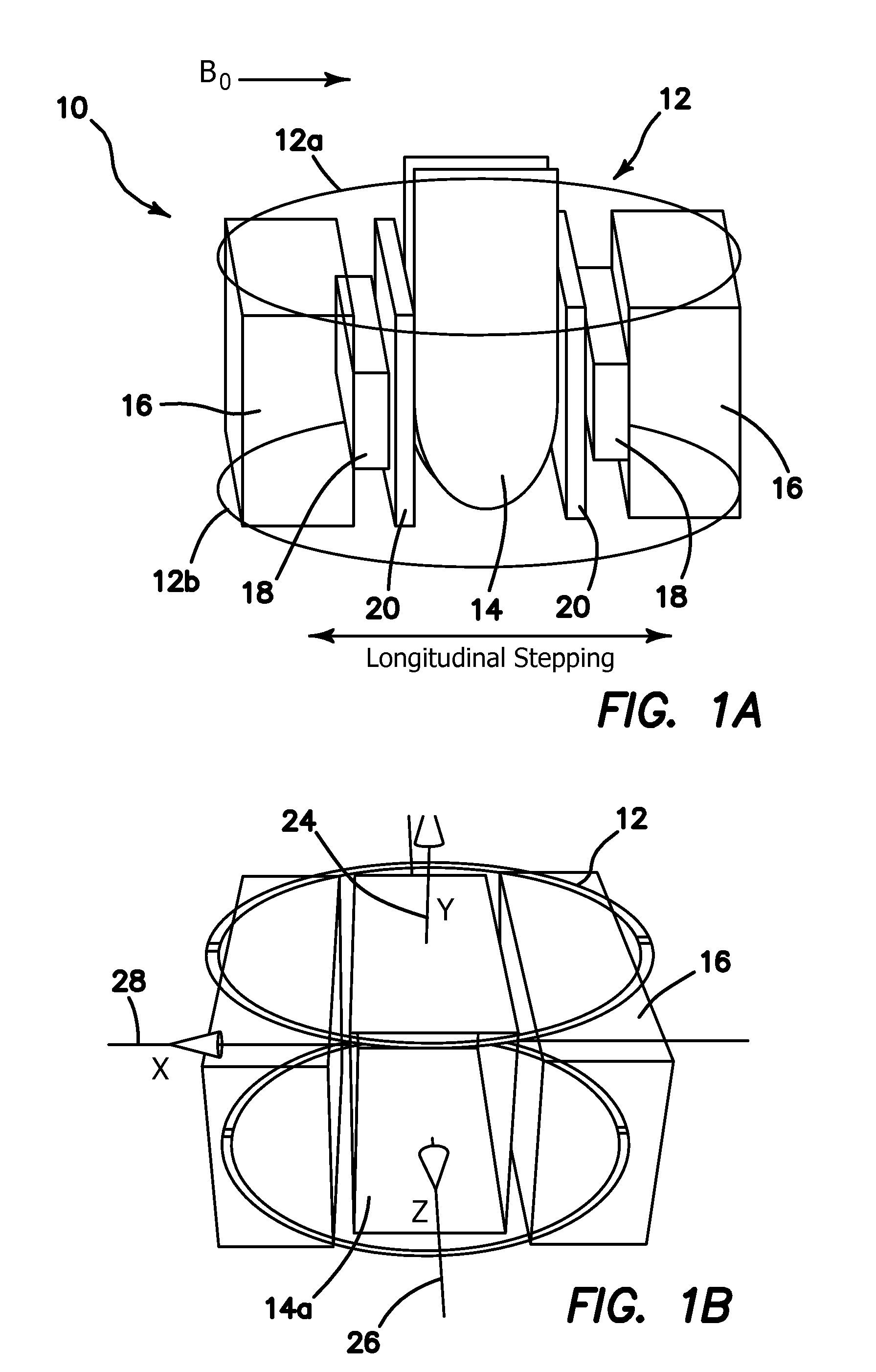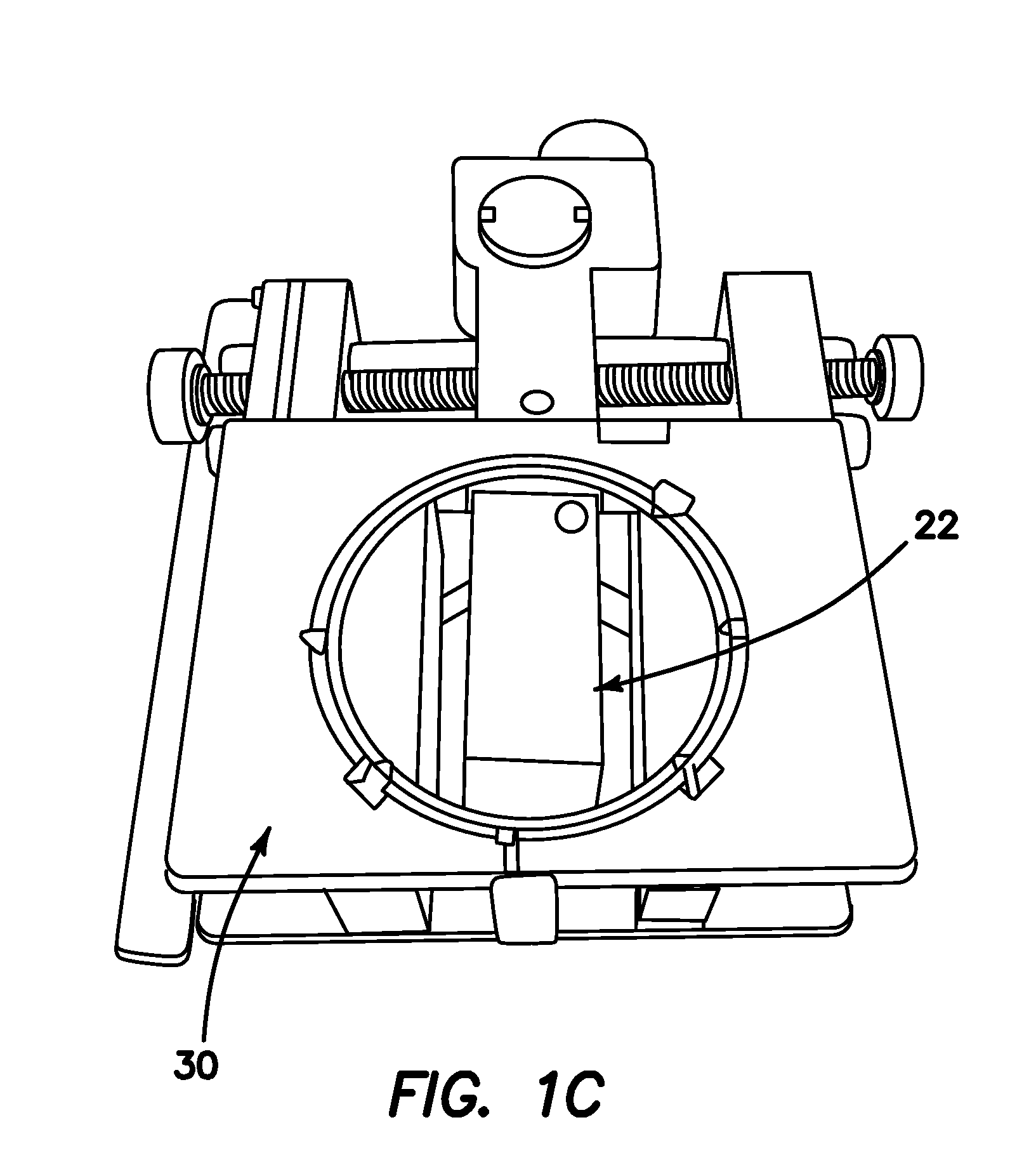Mr compatible compression based nuclear imaging system for breast cancer
a nuclear imaging and compression-based technology, applied in the field of multi-modal medical imaging, can solve the problems of inability to achieve the effect of reducing the risk of breast cancer, affecting the diagnostic accuracy of the combined system, etc., and achieves the effect of improving the diagnostic specificity, high sensitivity, and high specificity
- Summary
- Abstract
- Description
- Claims
- Application Information
AI Technical Summary
Benefits of technology
Problems solved by technology
Method used
Image
Examples
Embodiment Construction
[0037]One embodiment of the present invention is the MRSSM apparatus 10. One preferable embodiment of apparatus 10 is optimized for a 3T magnetic resonance imaging (MRI). However, it is to be understood that any conventional MRI field specification or MRI imaging system may be employed, when modified as disclosed below. The geometry of the RF array coil 12 of the MRI system includes two parallel circular loops 12a and 12b each 15 cm in diameter and separated by 6.5 cm as diagrammatically shown in FIG. 1a. In the illustrated embodiment as an example only, each loop 12a and 12b is etched on FR4 laminate board using copper strips of 0.0341 mm thickness, and mounted on an acrylic plate with the material within the loops removed to allow for insertion of the breast 14. The separation between the end plates of the coils 12a and 12b allows for insertion of CZT detector modules 16 through the side of the RF coil 12. MR compatible CZT detector modules 16 have been developed with the consulta...
PUM
 Login to View More
Login to View More Abstract
Description
Claims
Application Information
 Login to View More
Login to View More - R&D
- Intellectual Property
- Life Sciences
- Materials
- Tech Scout
- Unparalleled Data Quality
- Higher Quality Content
- 60% Fewer Hallucinations
Browse by: Latest US Patents, China's latest patents, Technical Efficacy Thesaurus, Application Domain, Technology Topic, Popular Technical Reports.
© 2025 PatSnap. All rights reserved.Legal|Privacy policy|Modern Slavery Act Transparency Statement|Sitemap|About US| Contact US: help@patsnap.com



